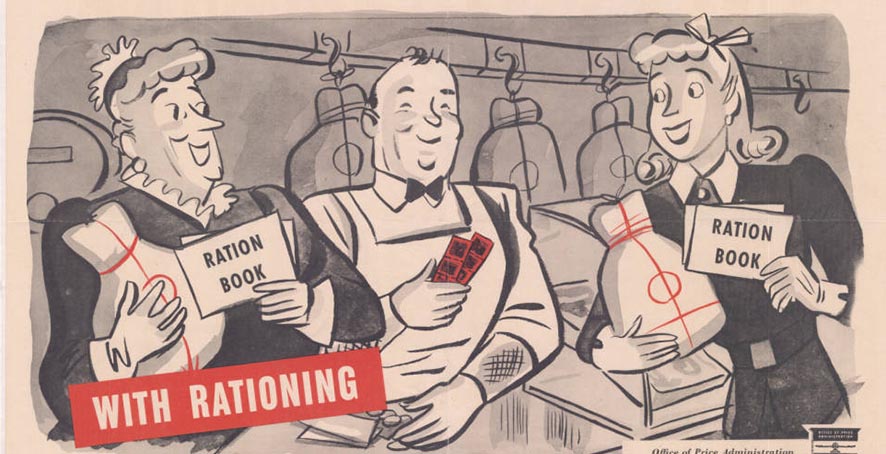North Carolina and World War II
After the Japanese Empire’s attack on the United States on December 7, 1941, the entire country mobilized for war as the country entered the fight in World War II. North Carolinians volunteered for military service, began rationing on the home front, raised money for war bonds, and joined local Civil Air Patrol units to guard the state from the enemy. New federal military installations like Camp Butner and Camp Davis were constructed in the state, and German and Italian prisoners of war were transported to newly built prison camps in North Carolina.
North Carolina schoolchildren ran scrap metal drives, created scrapbooks about their schools’ war service, and participated in patriotic celebrations in their communities. Young women in the state volunteered for USO clubs to support service individuals at local military installations; served on local defense recreation committees; joined the American Red Cross; and worked as community nurses. Patriotism was promoted through posters, swing dances, war bond drives, and parades in every North Carolina community.
Citizens raised “Victory” gardens, canned their own food, and rationed all sorts of goods throughout the war. Ships were built in Wilmington, airplane parts and gliders were made in Alamance County, and cigarettes for the troops were produced in Winston-Salem and Durham. Wooden gliders were used to train U.S. Army Air Force troops at Laurinburg-Maxton Army Air Base; anti-aircraft artillery units trained at Camp Davis; and airborne troops prepared for the Normandy invasions at Fort Bragg. The first large number of female Marines was stationed at Camp Lejeune as the Marine Corps Women’s Reserve. Wartime efforts continued in the state through 1946, after many service individuals finally returned to the United States from the European and Pacific Theaters.
Finding aids for World War II Papers are available on the State Archives website.
North Carolina and World War II
After the Japanese Empire’s attack on the United States on December 7, 1941, the entire country mobilized for war as the country entered the fight in World War II. North Carolinians volunteered for military service, began rationing on the home front, raised money for war bonds, and joined local Civil Air Patrol units to guard the state from the enemy. New federal military installations like Camp Butner and Camp Davis were constructed in the state, and German and Italian prisoners of war were transported to newly built prison camps in North Carolina.
North Carolina schoolchildren ran scrap metal drives, created scrapbooks about their schools’ war service, and participated in patriotic celebrations in their communities. Young women in the state volunteered for USO clubs to support service individuals at local military installations; served on local defense recreation committees; joined the American Red Cross; and worked as community nurses. Patriotism was promoted through posters, swing dances, war bond drives, and parades in every North Carolina community.
Citizens raised “Victory” gardens, canned their own food, and rationed all sorts of goods throughout the war. Ships were built in Wilmington, airplane parts and gliders were made in Alamance County, and cigarettes for the troops were produced in Winston-Salem and Durham. Wooden gliders were used to train U.S. Army Air Force troops at Laurinburg-Maxton Army Air Base; anti-aircraft artillery units trained at Camp Davis; and airborne troops prepared for the Normandy invasions at Fort Bragg. The first large number of female Marines was stationed at Camp Lejeune as the Marine Corps Women’s Reserve. Wartime efforts continued in the state through 1946, after many service individuals finally returned to the United States from the European and Pacific Theaters.
Finding aids for World War II Papers are available on the State Archives website.

